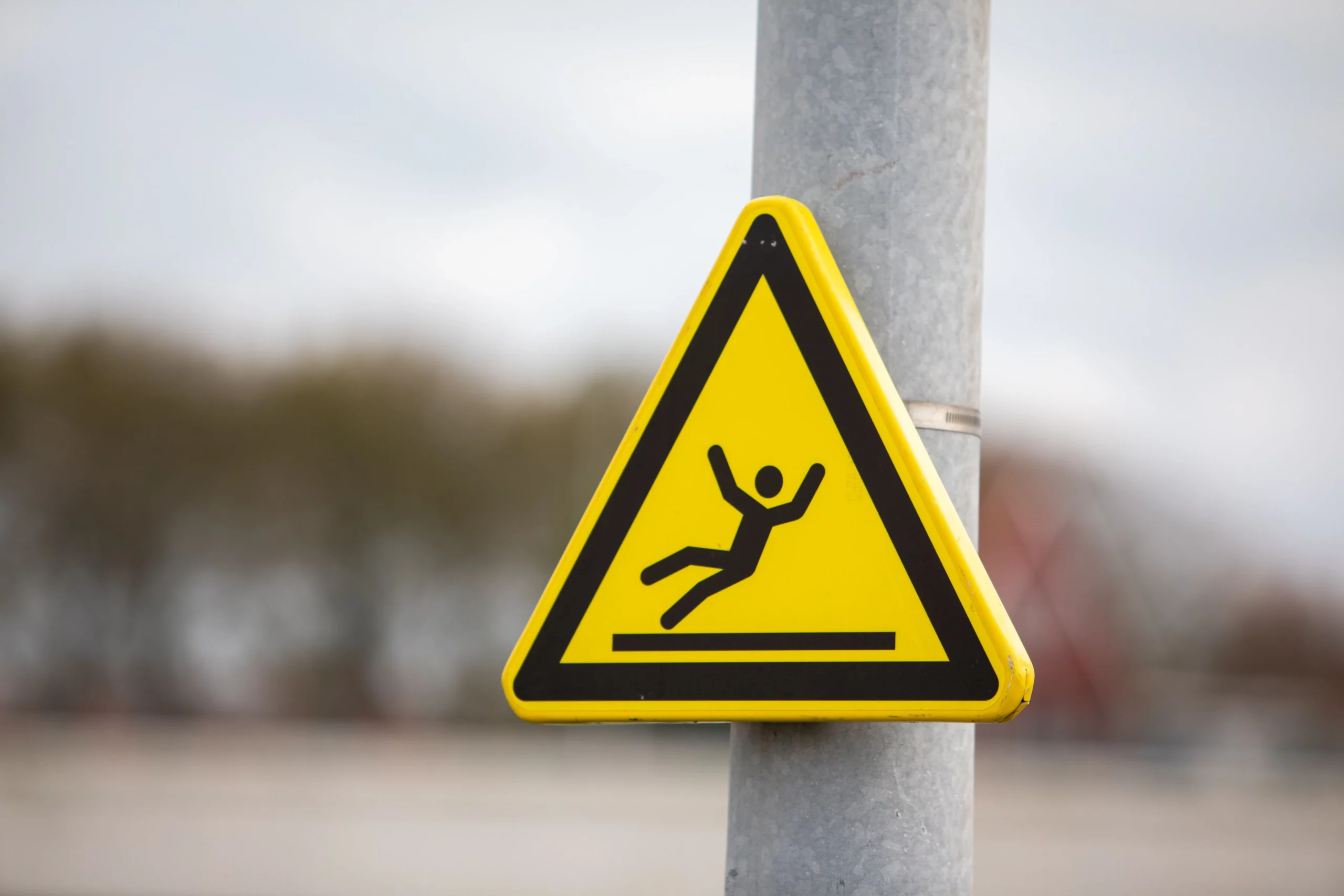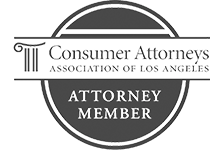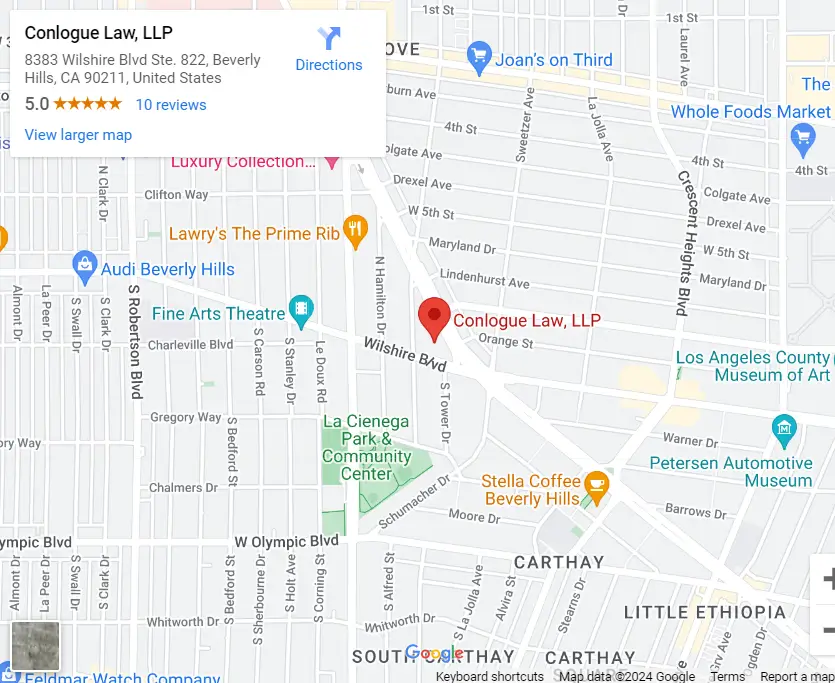Know the Difference Between Commercial & Residential Slip & Fall Claims
What happens when a glamorous stroll down Hollywood Boulevard or a relaxing evening at your friend’s pool party in Los Angeles takes a turn for the worse with a slip and fall accident? While the pain of the injury might be the same, the legal landscape surrounding Los Angeles commercial and residential slip and fall can differ significantly.
Slip and fall accidents can occur anywhere, but the circumstances and legal implications can vary depending on whether the incident happens in a commercial or residential setting. Whether you slipped in a busy retail store or tripped on a neighbor’s uneven sidewalk, knowing these key differences can help you determine your legal options and seek appropriate compensation for your injuries.
Quick Summary:
- Commercial properties in Los Angeles have a high duty of care towards visitors, requiring regular inspections and prompt hazard rectification. Residential properties have a lesser duty, often necessitating proof of the homeowner’s awareness of specific hazards.
- Winning a commercial slip and fall case demands proof of the hazard’s existence, the property owner’s knowledge, failure to mitigate risks, and the direct link between the hazard and the injury. Residential cases require demonstrating the homeowner’s awareness of the hazard and failure to provide adequate warning.
- Businesses typically carry strong commercial liability insurance covering medical expenses, property damage, and legal defense costs. Homeowner’s insurance may provide limited coverage for slip and fall incidents, subject to policy specifics and exclusions.
By equipping yourself with the differences of commercial and residential slip and fall accidents, you’ll be better positioned to navigate the legal process, whether it occurs on a bustling sidewalk or a friend’s slippery patio.
What is a Slip and Fall?
A slip and fall is an accident where someone loses their balance, slips, trips, or falls on someone else’s property and is injured as a result. This can happen due to various hazardous conditions such as wet or uneven surfaces, poor lighting, loose rugs, or cluttered walkways.
Slip and fall cases often fall under the broader category of premises liability claims, where the property owner or manager may be held responsible for the injuries if they failed to maintain a safe environment.
What Are Examples of Commercial Slip and Fall Cases?
Slip and fall accidents are common and can happen in both commercial and residential settings. In commercial settings, businesses are responsible for ensuring the safety of their customers, employees, and visitors. Similarly, homeowners must maintain their property to prevent injuries to family members, guests, and others. Below, we explore the typical slip and fall incidents in these different settings.
Common Commercial Slip and Fall Incidents
- Wet or Slippery Floors: Wet or slippery floors in grocery stores, malls, or restaurants can lead to slip-and-fall accidents if spills aren’t promptly cleaned or warning signs aren’t posted after mopping. It is the business’s responsibility to ensure floors are safe and to alert customers to any hazards.
- Uneven Surfaces: In commercial buildings, uneven surfaces such as cracked tiles, broken pavement, or worn-out carpets can cause people to trip and fall. Businesses should regularly inspect their floors and walkways to ensure they are even and safe for customers and employees.
- Poor Lighting: Good lighting is important to help people see where they are going. In places like parking lots, staircases, or hallways, poor lighting can hide hazards like steps, holes, or obstacles, leading to slip and fall accidents. Businesses need to make sure all areas are well-lit to prevent such accidents.
- Obstructed Walkways: In busy commercial areas, walkways can become cluttered with boxes, merchandise, or debris, creating tripping hazards. Businesses must keep these walkways clear and safe to prevent accidents.
Common Residential Slip and Fall Incidents
- Wet Sidewalks: Homeowners must keep the sidewalks in front of their homes safe and clear. If these sidewalks are wet or untreated, it can cause slip-and-fall accidents, so residents should ensure there are no hazards.
- Loose or Worn Carpeting: Loose or worn-out carpets and rugs inside homes can create tripping hazards. Homeowners should secure carpets properly and replace any that are worn out to prevent falls.
- Broken Stairs or Handrails: Stairs can be dangerous if they have broken steps or loose handrails. Homeowners should regularly check and fix any damage to ensure stairs and handrails are safe to use.
- Cluttered Living Spaces: In homes, clutter such as toys, electrical cords, or other objects left on the floor can create tripping hazards. Keeping living spaces organized and free of clutter helps prevent slip and fall accidents. It’s especially important in areas with high foot traffic.
Both commercial and residential property owners have a responsibility to maintain a safe environment to prevent slip and fall accidents. Taking proactive steps to address potential hazards can significantly reduce the risk of injuries.
What are the Key Differences Between a Commercial and Residential Slip and Fall Cases?
The context in which commercial and residential slip and fall accidents occur can significantly influence the legal and practical aspects of each case. While both types of cases involve someone getting injured due to hazardous conditions on a property, the responsibilities and legal standards for property owners vary widely between commercial and residential settings.
Here’s a breakdown of the key differences between commercial and residential slip and fall claims in Los Angeles:
Duty of Care
Commercial Properties: Businesses have a high duty of care to ensure their premises are reasonably safe for visitors, also known as invitees. This means they must regularly inspect the property for hazards and take prompt action to rectify any dangers they discover or should have discovered through reasonable inspections. Examples include wet floors in grocery stores, broken stairs in office buildings, or uneven pavement outside a shopping mall.
Residential Properties: Homeowners owe a lesser duty of care to visitors, categorized as licensees or invitees depending on the situation.
- Invitees: Guests invited for a specific purpose (social gathering) are typically owed a warning about known hidden dangers.
- Licensees: Individuals with permission to be on the property (friend using the bathroom) generally have no specific duty of care owed to them, unless the homeowner creates a new hidden danger through willful or wanton conduct.
Evidence Requirements
Commercial Properties: Evidence can include witness testimonies, security camera footage, pictures of the scene, and medical records documenting your injuries. To win a commercial slip and fall case, you’ll need to demonstrate:
- The presence of a dangerous condition on the property.
- The business knew or should have known about the hazard.
- The business failed to fix the hazard or warn visitors about it.
- Your fall and injuries were a direct result of the hazard.
Residential Properties: The burden of proof is higher in residential cases. You may need to show the homeowner:
- Knew about the specific dangerous condition that caused your fall and failed to warn you. Evidence can include:
- Prior complaints: Did you previously warn the homeowner about the hazard that caused your fall?
- Knowledge of similar incidents: Were there past instances where others almost fell due to the same issue? Documenting such instances can help establish the homeowner’s knowledge.
- Defects in construction or maintenance: If the fall resulted from a poorly maintained staircase or a faulty handrail, evidence of these defects can support your claim.
- The homeowner failed to warn you about the danger. This can be established through:
- Witness testimonies: Did anyone hear the homeowner warn you about the hazard before your fall?
- Lack of warning signs: If the hazard was not readily visible and the homeowner didn’t warn you about it, this strengthens your case.
Insurance Policies
Commercial Properties: Businesses typically carry commercial general liability (CGL) insurance that covers slip and fall accidents. A higher CGL policy limit translates to potentially greater compensation for your injuries and damages. CGL policies typically cover:
- Bodily Injury: Medical expenses incurred by the injured party due to the accident. This includes costs associated with hospitalization, surgery, rehabilitation, and medication.
- Property Damage: Damage to the injured party’s personal belongings as a result of the fall.
- Legal Defense Costs: If the business is sued, the CGL policy covers legal fees associated with defending the lawsuit.
Residential Slip & Fall Cases: Homeowners typically have Homeowner’s Insurance that offers some protection for slip and fall accidents that occur on the residential property. However, coverage varies depending on the specific policy and the circumstances of the accident. Here’s a breakdown:
- Personal Liability Coverage: This portion of the policy may cover medical bills and other damages sustained by the injured party, but with limitations far lower compared to commercial policies.
- Medical Payments Coverage: This limited coverage might help offset some initial medical expenses for the injured party, regardless of fault. However, the payout is typically capped at a much lower amount.
Not all homeowner’s insurance policies cover slip and fall accidents. Furthermore, some policies may have exclusions for specific situations (e.g., injuries caused by intentional acts of the homeowner). If the homeowner didn’t have adequate insurance or the policy excludes coverage for your situation, pursuing compensation might be more challenging.
Don’t Wait – Take Action! Contact Our Los Angeles Commercial and Residential Slip and Fall Attorney Now!
A slip and fall accident can be a life-disrupting event, leaving you with physical pain, emotional stress, and financial burdens. Understanding the key differences between commercial and residential slip and fall cases in Los Angeles enables you to take informed action.
Conlogue Law LLP is here and can help you assess the specifics of your case, gather essential evidence, and fight to ensure you receive fair compensation. Seeking legal guidance early can ensure that you maximize the chances of achieving a favorable outcome.
Consult with our Los Angeles slip and fall attorney today for a free initial consultation. We also provide legal help in other personal injury cases such as wrongful death, car accidents, product liability, and more.








